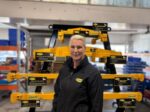Artisan skill and technology a successful brew at Zealong Tea Estates
With 48 hectares of certified organic Camellia sinensis growing in the heart of the Waikato, Zealong Tea Estate is New Zealand’s only commercial tea estate. You can tour the estate and sculpture walk, sample a high tea at their Tea Room, have a luxurious French-inspired meal at their Camellia Restaurant prepared by a chef plucked from the Michelin-starred kitchens of Paris, or take part in a traditional tasting of their internationally awarded teas. As a visitor destination, it’s a major asset to the region and the teas have been served to the likes of China’s President Xi Jinping and Her Majesty Queen Camilla during official events, and the estate has been filmed for the BBC Earth documentary One Cup, a Thousand Stories, which highlighted the estate’s quality-based approach to producing certified organic tea. Behind the scenes, the process of manufacturing its teas blends artisan skill and technology. The EMA’s Nicholas Russell sat down with Zealong General Manager Sen Kong to find out where they have used technology to improve efficiency but also how the human touch remains irreplaceable. Zealong has invested heavily in both people and technology. Why is the human touch still so crucial in your industry? Sen Kong: Technology plays a huge role in streamlining parts of our operation, such as processing, drying and quality control, but when it comes to the actual picking of the tea, the human hand is still superior. Machines aren’t yet sophisticated enough to distinguish the top three leaves from the rest of the plant, and that matters. Those top three leaves are the most tender and flavour rich. A machine might take too much, or damage the plant, which affects secondary growth. A trained picker knows exactly how to pluck, preserving both the leaf quality and the health of the bush. In addition, tea […]










